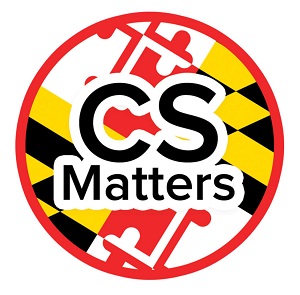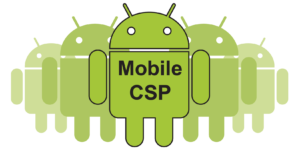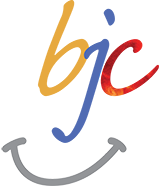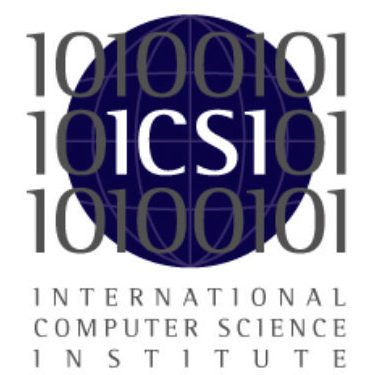About the Project
The new Advanced Placement Computer Science Principles (CSP) course and exam launches in 2016-17. The CSP framework organizes foundational knowledge about computer science around seven “Big Ideas”. This organization expands the scope of expectations for high-school computer science beyond programming to the context, goals, uses, and implications of computer technology in the world — most broadly in Big Idea 7, “Global Impact”. Many high school teachers are excited to see this “missing piece” added to computer science education — but exactly because it’s innovative, it can be difficult to know how to teach it!
Not teaching AP CSP?
This site is still for you! The real-world impact of computing — on society and on their own lives — is a great hook that stimulates students’ lasting interest in computer science. In particular, contextualizing traditional CS content by asking students to think critically about impact helps to broaden participation in CS by young women and underrepresented minorities. And students who go on to careers in technology will benefit from an early grounding in the social and ethical implications of their work.
Teach Global Impact is a collaborative effort
Leading computer science educators have been developing materials for CSP. Our goal is to create a unified resource for teaching the global impact of computing:
- Leveraging seven excellent CSP curricula, most endorsed by the College Board.
- Providing solid guidance and strategies for bringing social impact into computer science.
- Sharing creative classroom-ready materials, from individual curricula or created for Teach Global Impact.
More About
AP Computer Science Principles:
The College Board’s CSP home page
Teach Global Impact Contributors
Computing in Secondary Schools
 Computing in Secondary Schools (CISS) is a project at Cleveland State University to provide professional development to AP CSP teachers throughout Ohio. Materials are largely based on a CSP pilot at UC San Diego using the Alice programming language.
Computing in Secondary Schools (CISS) is a project at Cleveland State University to provide professional development to AP CSP teachers throughout Ohio. Materials are largely based on a CSP pilot at UC San Diego using the Alice programming language.
Represented by Nigamanth Sridhar, Professor at Cleveland State University
CS Matters
 CS Matters aims to increase the quality and availability of computer science education in Maryland and DC high schools. Efforts center around a Python-based, data-focused curriculum for CS Principles.
CS Matters aims to increase the quality and availability of computer science education in Maryland and DC high schools. Efforts center around a Python-based, data-focused curriculum for CS Principles.
Represented by John Winder, PhD Student at University of Maryland, Baltimore County, and Marie desJardins, Professor at UMBC
CSP CS4HS
 CSP4HS is a professional development effort to bring AP CSP to high schools across Alabama (growing out of CS4Alabama). It is based on a CS Principles pilot at University of Alabama, and emphasizes training in engagement strategies like cooperative learning.
CSP4HS is a professional development effort to bring AP CSP to high schools across Alabama (growing out of CS4Alabama). It is based on a CS Principles pilot at University of Alabama, and emphasizes training in engagement strategies like cooperative learning.
Represented by Jonathan Corley, Assistant Professor at University of West Georgia, and Jeff Gray, Professor at University of Alabama
With assistance from University of West Georgia students Anna Clark, Tyler Daniell, Michael Morguarge, and Nnamdi Onwumere
Mobile CSP
 Mobile CSP builds a CS Principles curriculum around mobile computing. Students use the App Inventor programming language to build socially useful mobile apps, while also improving research and writing skills.
Mobile CSP builds a CS Principles curriculum around mobile computing. Students use the App Inventor programming language to build socially useful mobile apps, while also improving research and writing skills.
Represented by Jennifer Rosato, Assistant Professor at College of St. Scholastica, and Ralph Morelli, Professor at Trinity College
UTeach CS Principles
 UTeach CS Principles is a project-based curriculum developed by UTeach CS at the University of Texas, Austin. UTeach CS focuses on improving CS teacher preparation and certification pathways, through a national working group and the UTeach curriculum for STEM teacher preparation.
UTeach CS Principles is a project-based curriculum developed by UTeach CS at the University of Texas, Austin. UTeach CS focuses on improving CS teacher preparation and certification pathways, through a national working group and the UTeach curriculum for STEM teacher preparation.
Represented by Bradley Beth, Curriculum Specialist at UTeach CS (UT Austin), and Alicia Beth, Manager at UTeach CS
Additional Collaborators
 This unified resource and the creation of new Teach Global Impact materials are supported by the National Science Foundation, under a grant to ICSI for “SInRGI: A Shared, Integrated Resource for ‘Global Impact’” (#1637601). Many of the independent resources we index on this site were also created by NSF-sponsored projects, under the STEM+C and CE21 funding programs. (Any opinions, findings, or conclusions expressed on this website are those of the authors, and do not necessarily reflect the views of the funders.)
This unified resource and the creation of new Teach Global Impact materials are supported by the National Science Foundation, under a grant to ICSI for “SInRGI: A Shared, Integrated Resource for ‘Global Impact’” (#1637601). Many of the independent resources we index on this site were also created by NSF-sponsored projects, under the STEM+C and CE21 funding programs. (Any opinions, findings, or conclusions expressed on this website are those of the authors, and do not necessarily reflect the views of the funders.)
Logo Images: See individual curricula for information about licensing of logo images.





